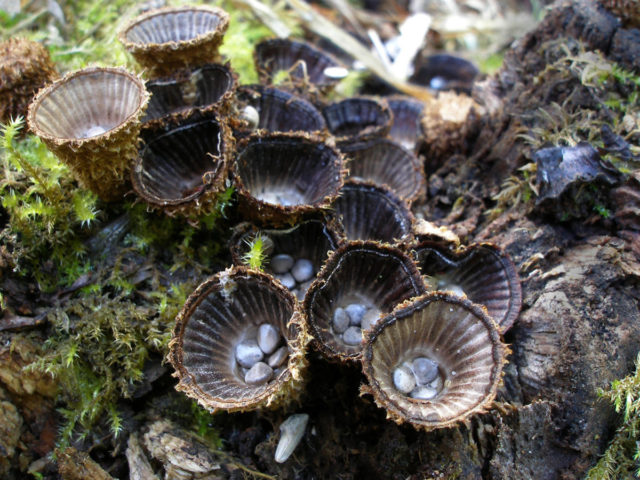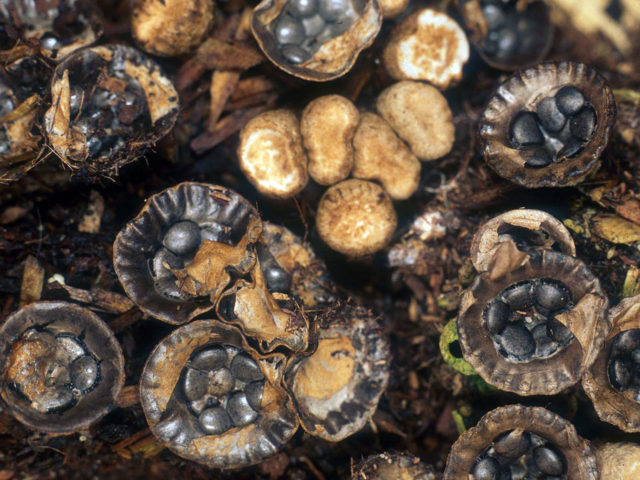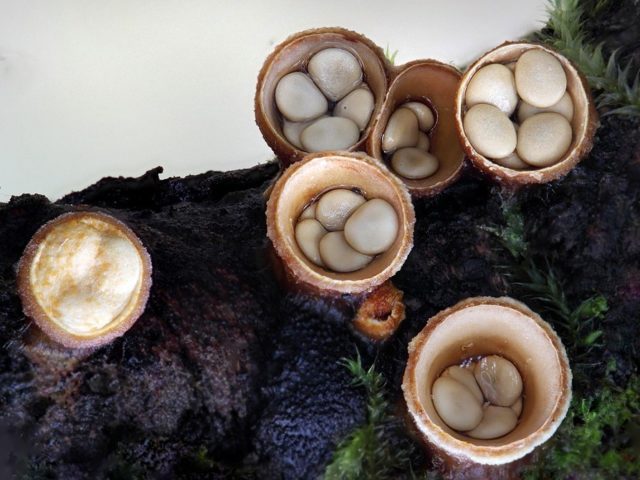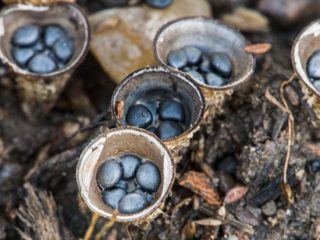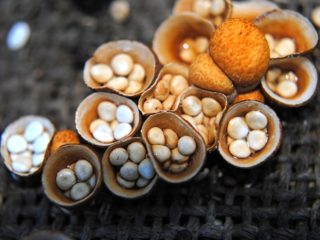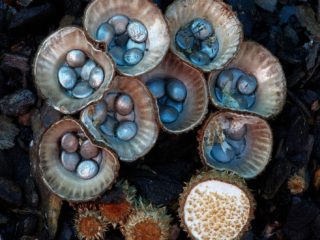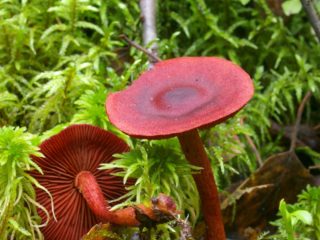Content
A dung glass is a miniature inedible mushroom, shaped like a glass or an inverted cone. It is rare, grows on fertile soil in large families. Fruiting in spring and autumn. Since the mushroom has a bizarre shape, it is very difficult to confuse it with edible representatives.
Where does a glass of dung grow
A glass of manure is rare. It prefers to grow on moist fertile soil, on a pile of manure, in decaying deciduous substrate or on dry wood. Bears fruit in large families in spring and autumn. They can also be seen before the beginning of winter after heavy rains.
What a glass of manure looks like
Acquaintance with the species must begin with external characteristics. The fruit body in juvenile specimens is oblong, light coffee in color. The surface is covered with a snow-white film that covers the spore layer. As it matures, the membrane ruptures, and gray-gray oblong peridiols appear, which play the role of containers for spores. They are attached to the bottom of the glasses using a mycelial cord.

The species grows in close groups
Outside, the mushroom is covered with microscopic hairs and is painted in ocher or coffee color. The inside is glossy, smooth, gray or black. The pulp is tasteless and odorless, so the mushroom has no nutritional value.
Reproduction occurs in large, thick-walled spores with a glossy surface. As it ripens, it breaks apart, and the spores are spread by the wind over long distances.
A glass of dung, like any inhabitant of the forest, has similar twins. Such as:
- Striped - an inedible species that grows in mixed forests. The small fruiting body is oblong. As it matures, the top breaks open, exposing the ovoid dark peridioli, and the mushroom takes on the shape of an inverted cone. It is rare, bears fruit in large groups in autumn.
The pulp is tough, tasteless and odorless
- Olla - a small inedible mushroom with a felt surface. At a young age, the shape is ovoid; as it grows, it becomes conical. The surface is velvety, dark coffee color. They grow on a woody substrate in deciduous and spruce forests, steppes and meadows. Fruiting from May to October, sometimes found in winter. The fungus often grows in large groups.
The species is widespread in mixed forests
- Smooth - an inedible species that grows in mixed forests on decaying wood and deciduous substrate. Fruiting during the whole warm period in close groups. The mushroom can be recognized by its small barrel-shaped shape. As it matures, it becomes conical, the membrane ruptured, exposing the light coffee storage for spores. The pulp is tough, elastic, ocher, tasteless and odorless.
Grows on rotting wood
Is it possible to eat a glass of dung
A dung glass is an inedible representative of the mushroom kingdom. Due to the lack of taste and smell, the species is not used in cooking.But, due to the ability to destroy wood remains, this representative is widely used for processing agricultural residues.
The fungus breaks down lignin without significantly damaging the cellulose. This increases the nutritional value of plant residues and becomes valuable for feeding livestock.
This type of glasses is used in folk medicine. Fruiting bodies secrete antioxidants that protect nuclear DNA. Also, flocks and infusions are made from young specimens for the treatment of gastrointestinal diseases.
Conclusion
A glass of manure - due to the lack of taste, they are not used for food. But the species has found application in agriculture and thanks to its beneficial properties in traditional medicine. It can be recognized by its bizarre shape and roundish black peridioles, which are located inside the cone.
